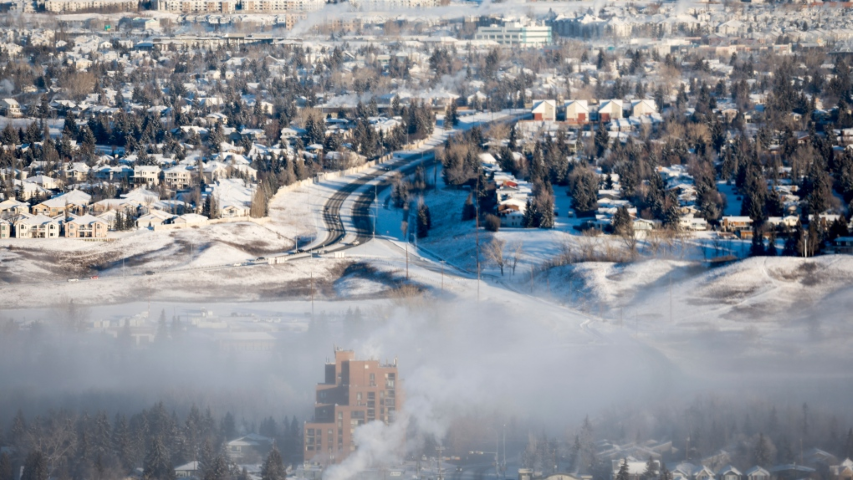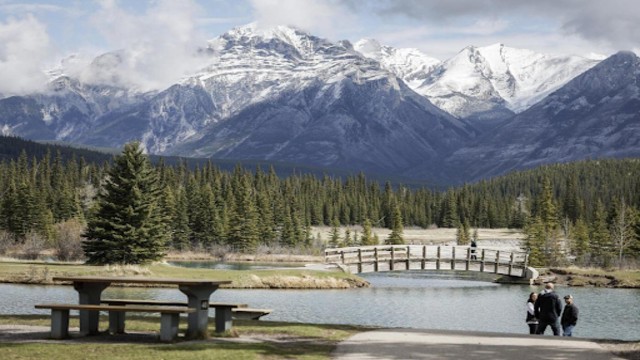
A misty ice fog lingers above heated neighbourhoods in Calgary on Saturday, January 13, 2024. Captured by Jeff McIntosh for THE CANADIAN PRESS.
As Canada grapples with bone-chilling temperatures this Sunday, Western Canada and the Prairies find themselves in the icy grip of a severe cold front. Environment Canada's weather warnings map displays a sea of red, signalling freezing warnings covering Alberta, Saskatchewan, and substantial portions of Manitoba.
In Alberta, where temperatures plummet to as low as -55 degrees Celsius with wind chill, authorities caution residents about the rapid onset of frostbite on exposed skin within minutes. The entire province, including patches of dense ice fog near communities, is affected. The Airdrie Public Library, north of Calgary, has extended its hours to serve as a round-the-clock warming center, reflecting the community's united efforts to cope with the extreme conditions.
After a call for power conservation on Saturday night to ease the strain on the grid, officials are actively working to prevent a similar scenario on Sunday night. Relief is expected to begin on Monday, gradually moderating temperatures across Alberta, starting from the southern regions.
Saskatchewan faces a prolonged period of very cold wind chills, with values ranging from -40 to -55 degrees Celsius. An arctic air mass persists, bringing dangerously cold temperatures and winds of up to 30 km/h, exacerbating conditions for residents. Northern Saskatchewan may experience extremely cold wind chill values until Tuesday.
Manitoba, especially its southern regions, is affected by the same cold front, with wind chill values as low as -55 degrees Celsius. Residents in Winnipeg are advised to keep pets indoors and watch for frostbite. Despite fewer warnings, parts of British Columbia are also experiencing extreme cold and strong wind chill due to arctic outflows. Vancouver is seeing wind chill values near -20 degrees Celsius, but rising temperatures on Sunday offer some relief.
In Ontario, various regions face extreme cold or snow squall warnings. Lake effect snow squalls impact areas near Lake Huron, with heavy blowing snow and snowfall rates potentially exceeding 5cm per hour. The Leeds and Grenville area remains hazardous for motorists, with 107 collisions reported on OPP-patrolled roads from Friday evening to Sunday morning.
Quebec, particularly in southern areas near Montreal, experiences reduced visibility due to heavy flurries from the Great Lakes, prompting special weather statements.
Atlantic Canada largely escapes the frigid weather, but Newfoundland and Labrador contend with ferocious coastal winds causing potential structural damage. The western coast of Newfoundland and the eastern coast of Labrador experience winds up to 100 km/h.
In Northern Canada, the southern region of the Northwest Territories faces extreme wind chill values near -50 degrees Celsius. Patches of dense fog persist, with temporary relief expected in some regions along the Mackenzie River on Sunday night and Monday. However, scattered blizzards impact Nunavut, with Naujaat and Arviat facing blizzard conditions, enduring until Tuesday.
In summary, a relentless cold snap tightens its grip across Canada, prompting extreme temperature warnings, community support efforts, and challenges for residents and authorities alike.















